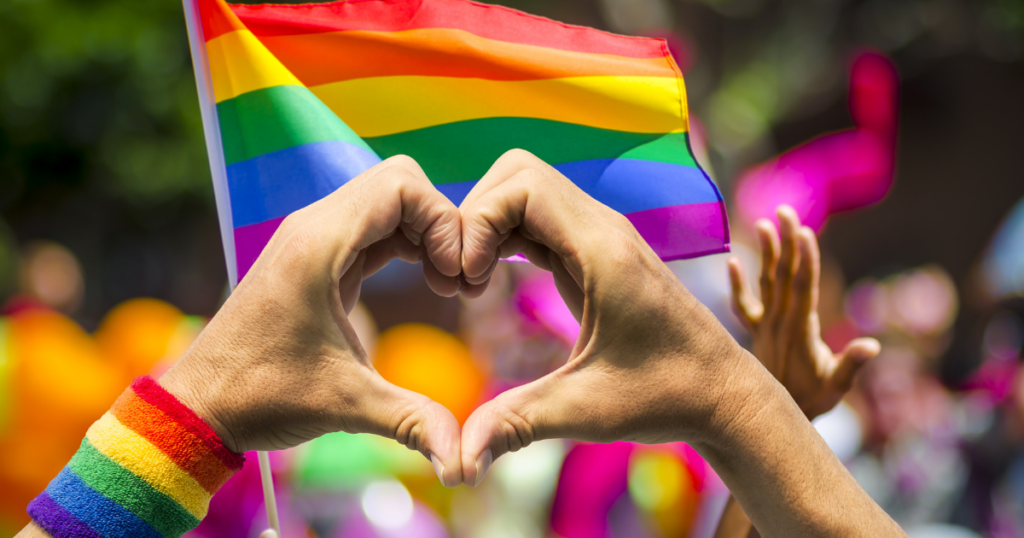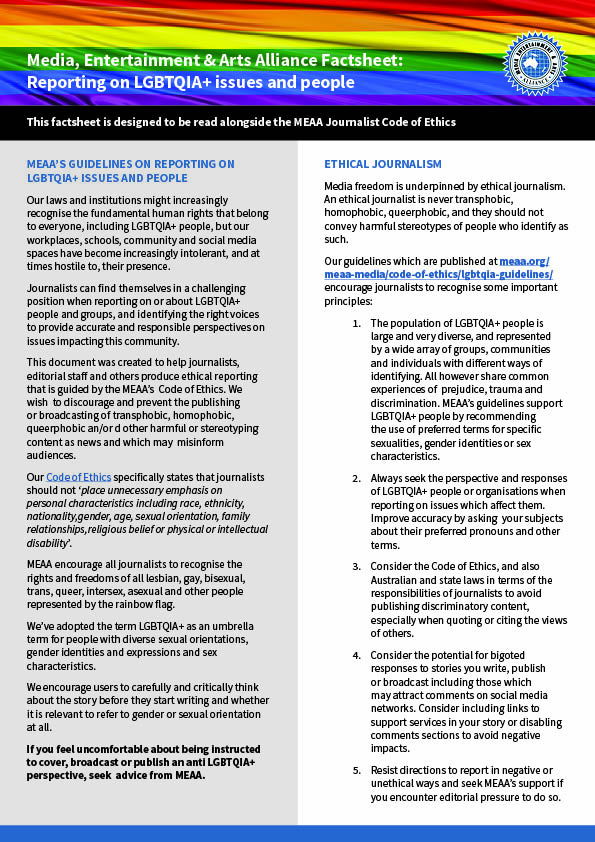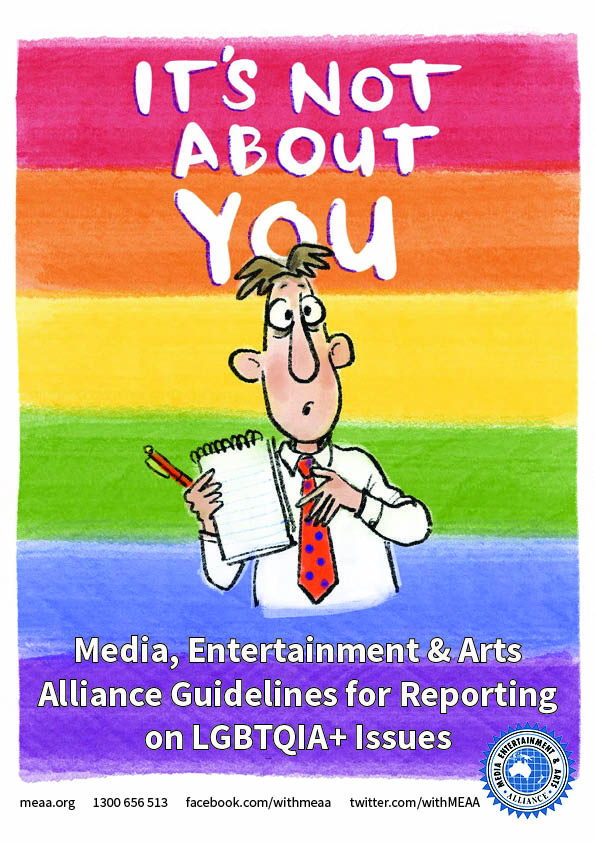MEAA Guidelines for Reporting on LGBTQIA+ Issues
MEAA’s National Media Section committee has introduced guidelines to assist journalists to deliver respectful coverage of LGBTQIA+ people and the issues they face.
Our Code of Ethics specifically states that journalists should not ‘place unnecessary emphasis on personal characteristics including race, ethnicity, nationality,gender, age, sexual orientation, family relationships,religious belief or physical or intellectual disability’.
The population of LGBTQIA+ people is large and diverse and represented by a wide array of groups, communities and individuals with different ways of identifying and expressing their specific gender identities, sexualities or sex characteristics. All however share common experiences with prejudice, trauma and discrimination. This hurt is sometimes worsened by disrespectful media reporting.
The guidelines are available for journalists who have questions about covering an issue or topic they may not have encountered. The broad principle is to encourage journalists to recognise the rights and freedoms of all lesbian, gay, bisexual, trans, queer, intersex, asexual and all other people who identify within this spectrum represented by the rainbow flag, and to encourage respectful and ethical editorial coverage of the issues they face.
The aim is to provide a range of tools to help journalists produce ethical reporting that is guided by MEAA’s Journalist Code of Ethics.
The guidelines follow the successful introduction of the MEAA Guidelines on Reporting Hate Speech and Extremism in 2020, which have helped journalists navigate ways to report on race and to handle extremist content in their day-to-day news reporting. The two sets of guidelines are designed to sit alongside the MEAA Journalist Code of Ethics.
Download the two-page factsheet.
Download the guidelines.
How were the Guidelines for Reporting on LGBTQIA+ Issues developed?
A small group of volunteers led by MEAA’s Ethics Committee sought views and input from a range of community organisations that represent gay, lesbian, bisexual, trans and gender diverse, queer, intersex and other people with innate variations of sex characteristics, asexual, demisexual and other diverse people represented by the rainbow flag, as well as from the members of the MEAA Media section.
Why are the guidelines quite long and detailed?
Community representatives urged MEAA’s guidelines to be comprehensive and support the spectrum of LGBTQIA+ people by recommending the use of preferred terms for specific sexualities, gender identities or sex characteristics; to provide suggested approaches to interviewing and storytelling; legal and ethical considerations, and links to additional resources.
Why are you using the term LGBTQIA+? What about other terms?
MEAA adopted the term LGBTQIA+ with the support of community groups, as a common umbrella term for people with a wide range of diverse sexual orientations, gender identities and expressions and sex characteristics. We appreciate there are different ways of identifying and this term is simply used as a starting point for a richly diverse spectrum of people with a range of gender identities, cultures, backgrounds, sexualities, orientations, and sex characteristics.
Why are these guidelines important to MEAA members?
The guidelines will also inform the work of the MEAA Ethics Committee, a group of elected volunteers that works to promote and protect ethical practice amongst the professional journalists who belong to MEAA.
The project to produce these guidelines also reflects a wider goal for MEAA to work as a progressive force for social change and to protect the rights and freedoms of everyday Australians through our campaigns across the industries we represent.


